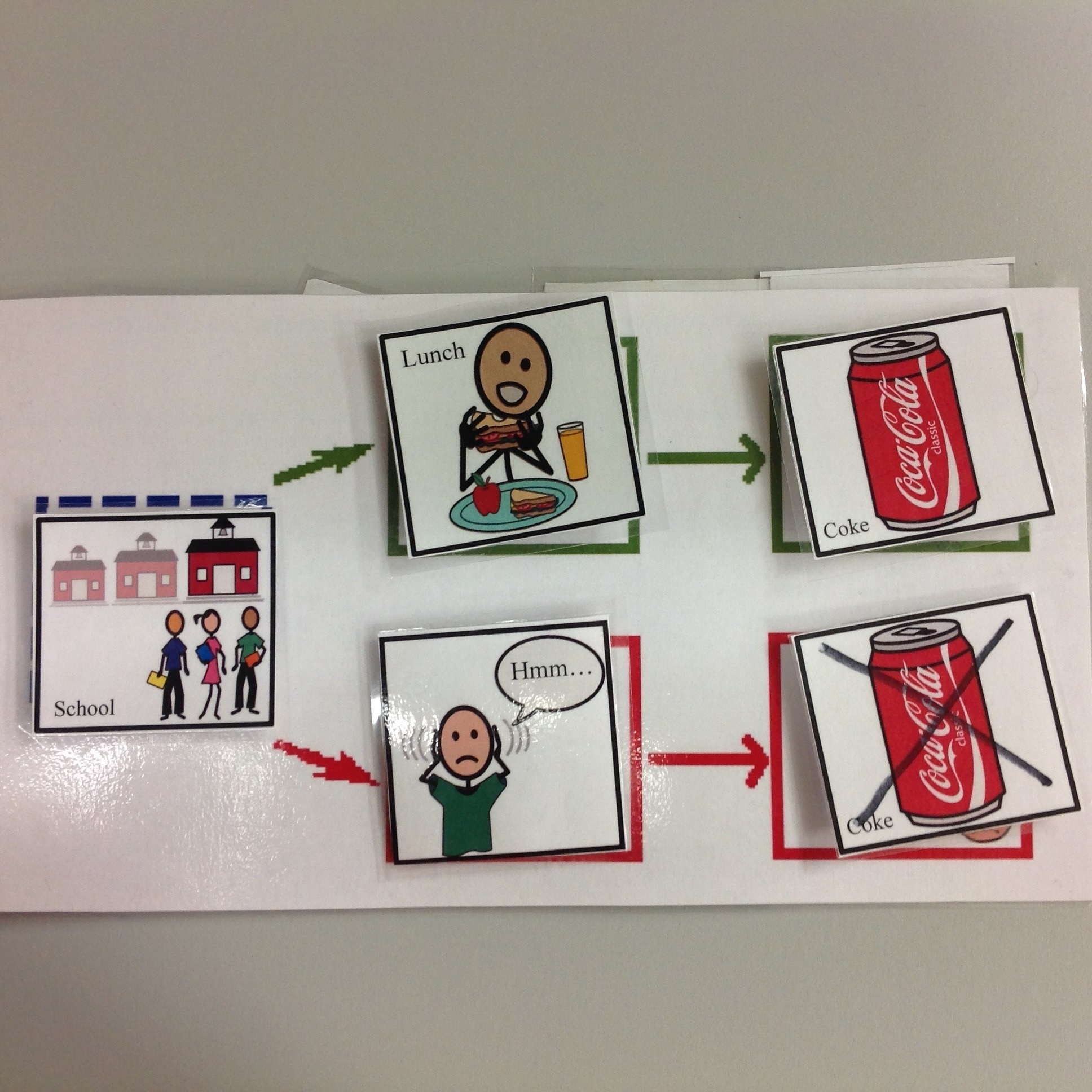
Behavior Contingency Map for a Student
Behavior Contingency Map for a Student
An example of a map for a student.
When to use:
- Use when you know the function of a challenging behavior and need to teach an alternative or replacement behavior.
How to use:
- Identify and clearly define the challenging behavior to address.
- Determine the antecedent, what happens immediately before the challenging behavior.
- Create a graphic organizer with the antecedent in the center.
- Draw two paths branching off from the antecedent:
- The first path should be the agreed upon replacement behavior; the second path should be the challenging behavior .
- Finally, identify the consequence, what happens immediately following the behavior, of each behavior identified.
- Draw two paths branching off from the antecedent:
- Review the behavior contingency map with the student.
- Discuss the different behaviors and the consequences for each behavior.
- Keep the behavior contingency map visible to the student in the setting where the behavior choice is likely to occur.
Tips: It is important that the student knows how to perform the replacement behavior. Explicit teaching through modeling, reinforcement, prompting, and repetition may be necessary.
This tool may be beneficial even if it is not used with a student. Members of an educational team can utilize it during a Functional Behavior Assessment process or discussions about behavior change to clarify and assure agreement among team members.
Variations:
- Use illustrations, words, or a combination, depending on student need.
